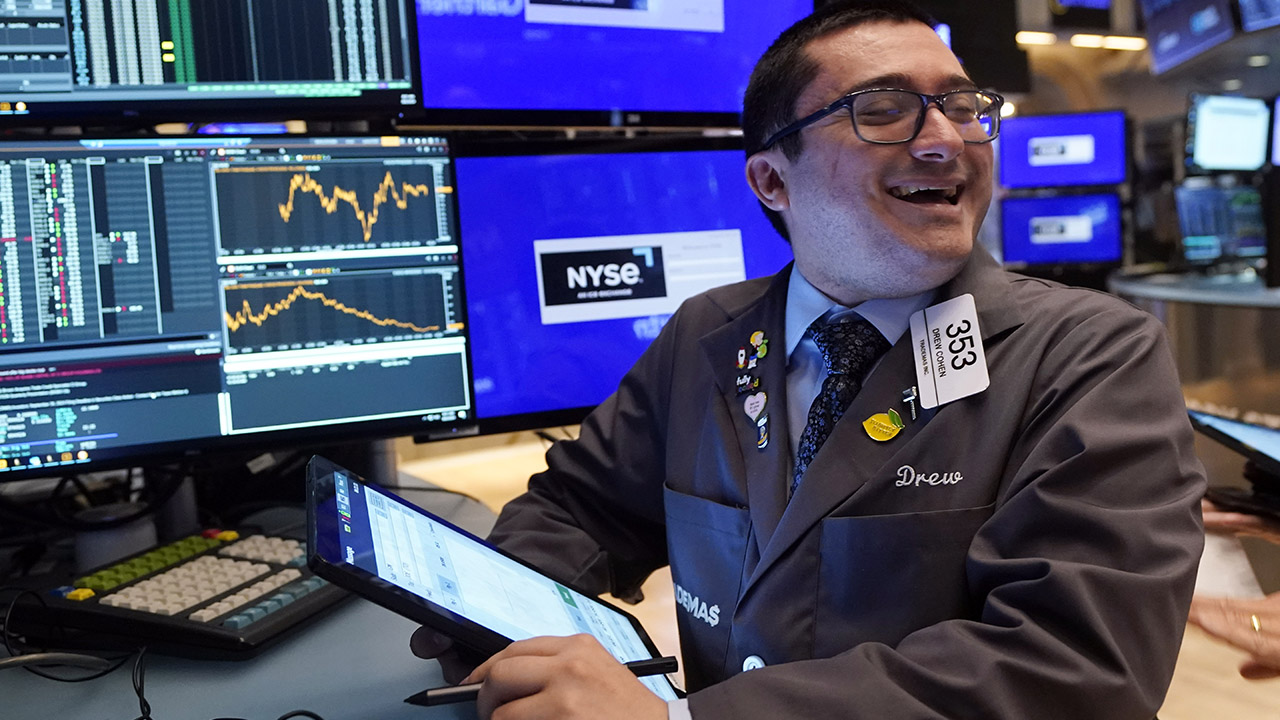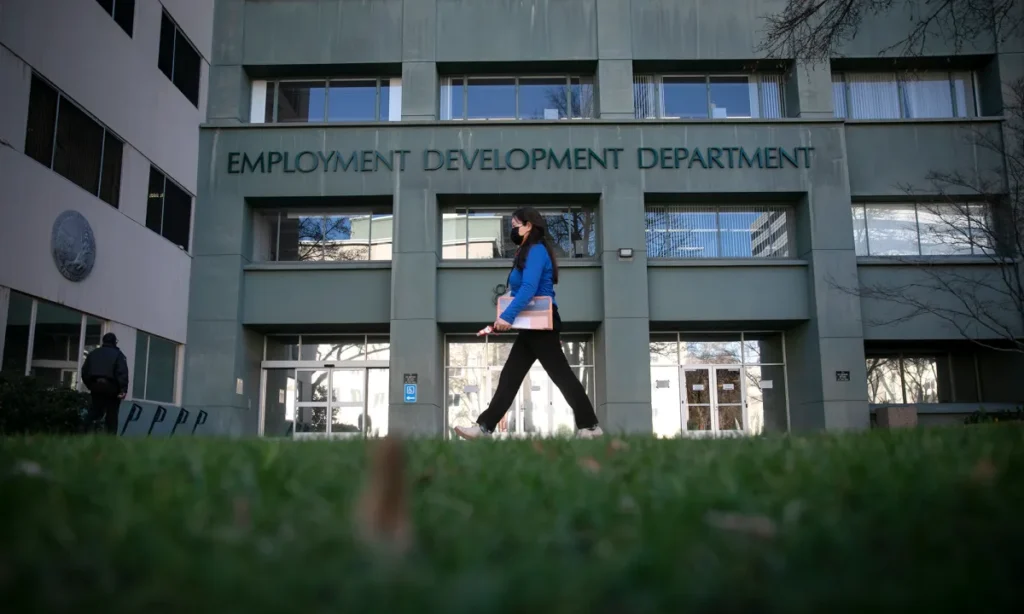Global markets rebound as Japan's central bank pledges stability, easing investor concerns and boosting Wall Street. (AP/Richard Drew)

- S&P 500 jumps 1.3%, on track for back-to-back gains following a steep three-day slide that saw it tumble over 6%.
- Bank of Japan's reassurance calms markets, promising not to raise rates when financial markets are unstable.
- Corporate earnings reports continue to roll in, with potential for S&P 500 growth to be the best since 2021.
Share
|
Getting your Trinity Audio player ready...
|
NEW YORK — Stocks are bouncing higher on Wall Street again as a bit more fear washes out of global markets Wednesday following their steep, scary slide that began last week.
The S&P 500 was jumping by 1.3% in midday trading and on pace for a back-to-back gain of at least 1% following a brutal three-day losing streak where it tumbled a bit more than 6%. The Dow Jones Industrial Average was up 395 points, or 1%, as of 11:40 a.m. Eastern time, and the Nasdaq composite was 1.5% higher.
Bank of Japan’s Reassurance Calms Markets
Several reasons were likely behind the slide for markets worldwide, and one of them that’s centered in Japan seems to be calming. The Bank of Japan raised its main interest rate by only a bit last week, but the move nevertheless sent aftershocks worldwide. It scrambled a favorite trade among some hedge funds and other investors, who borrowed money for very cheap in Japanese yen and then invested it elsewhere around the world.
Speaking to business leaders in the northern island of Hokkaido, Shinichi Uchida, deputy governor of the Bank of Japan, acknowledged the recent market turmoil, which was also triggered in part by concerns about the slowing U.S. economy.
Japan’s central bank can afford to wait, he said, and “will not raise its policy interest rate when financial and capital markets are unstable.” He also said he believed the U.S. economy would have a “soft landing” and avoid a recession, even if fears have risen the Federal Reserve has kept interest rates too high for too long in hopes of stifling inflation.
Related Story: The Next Month in the Economy Could be Crucial for the Presidential Election
Risks Remain Despite Market Optimism
The Japanese promise offered a balm for markets, nervous about additional moves by the Bank of Japan, which only recently ended its yearslong campaign to keep interest rates below zero.
But it also highlights how risks may remain, suggesting there’s still room left for the popular “carry” trade to unwind and that some hedge funds and other investors may “still remain offsides,” according to John Lynch, chief investment officer for Comerica Wealth Management.
Japan’s rate hike last week sent the value of the Japanese yen soaring, and the resulting exit of investments by those hedge funds likely slapped turbochargers onto market losses, including the worst drop for the Nikkei 225 since the Black Monday crash of 1987.
Related Story: Wall Street Rallies to Bounce Back From Its Worst Day in Nearly 2 Years, as ...
Positive Signals Emerge on Wall Street
Still, several signals of improved optimism continued to light up on Wall Street. A measure of how much investors are paying to protect from future losses in the S&P 500 index eased. Treasury yields also climbed in an indication investors are feeling less need to own the safest of investments.
The yield on the 10-year Treasury rose to 3.94% from 3.90% late Tuesday. It had briefly dropped below 3.70% on Monday, when fear in the market was spiking and investors were speculating the Federal Reserve could even have to call an emergency meeting to cut interest rates quickly.
The yield on the two-year Treasury, which more closely tracks expectations for Fed action, rose to 4.02% from 3.99% late Tuesday.
The first thing Darrell Cronk, chief investment officer for Wealth & Investment Management at Wells Fargo, does when he wakes each morning now is to check on the two-year yield and the Japanese yen. The former shows where the market wants or needs the Fed’s main interest rate to go, he says, while the second shows how much the “carry” trade is unwinding.
The expectation on Wall Street is for the Fed to cut its main interest rate at its next scheduled meeting next month by either the traditional quarter of a percentage point or the more severe half of a point.
Related Story: Dow Drops 1,000 Points, and Japanese Stocks Suffer Worst Crash Since 1987 on ...
Corporate Earnings Reports Continue to Roll In
In the meantime, earnings reports from the biggest U.S. companies continue to roll in, and the growth for those in the S&P 500 index may end up being the best since 2021, according to FactSet.
The Walt Disney Co. delivered stronger earnings for the latest quarter than analysts expected, and its streaming business reported a profit for the first time. But its stock nevertheless slipped 1.6% after it warned recent softness it saw at its U.S. theme parks could continue for “the next few quarters.”
Airbnb tumbled 12.3% after its profit in the second quarter fell short of analysts’ expectations, and it told investors that it saw some signs of slowing demand in the U.S.
Super Micro Computer dropped 15.5% after also reporting weaker results than Wall Street expected. It had been one of the year’s biggest winners amid investors’ frenzy around artificial-intelligence technology, and its stock soared more than 300% in the year’s first two and a half months. But such extreme moves caused critics to say the AI bonanza sent many stock prices too high.
They’ve pointed in particular to Nvidia and the other handful of Big Tech stocks in the “Magnificent Seven” that were the main reason the S&P 500 set so may records this year. A set of underwhelming profit reports recently, kicked off by Tesla and Alphabet, added to the pessimism and dragged Big Tech stocks lower.
But Microsoft’s 1.9% gain and Apple’s 3% climb on Wednesday were the two biggest forces pushing the S&P 500 higher.
In stock markets abroad, indexes climbed across much of Europe and Asia.
RELATED TOPICS:
Categories

What We Know About Rob Reiner and His Death


















